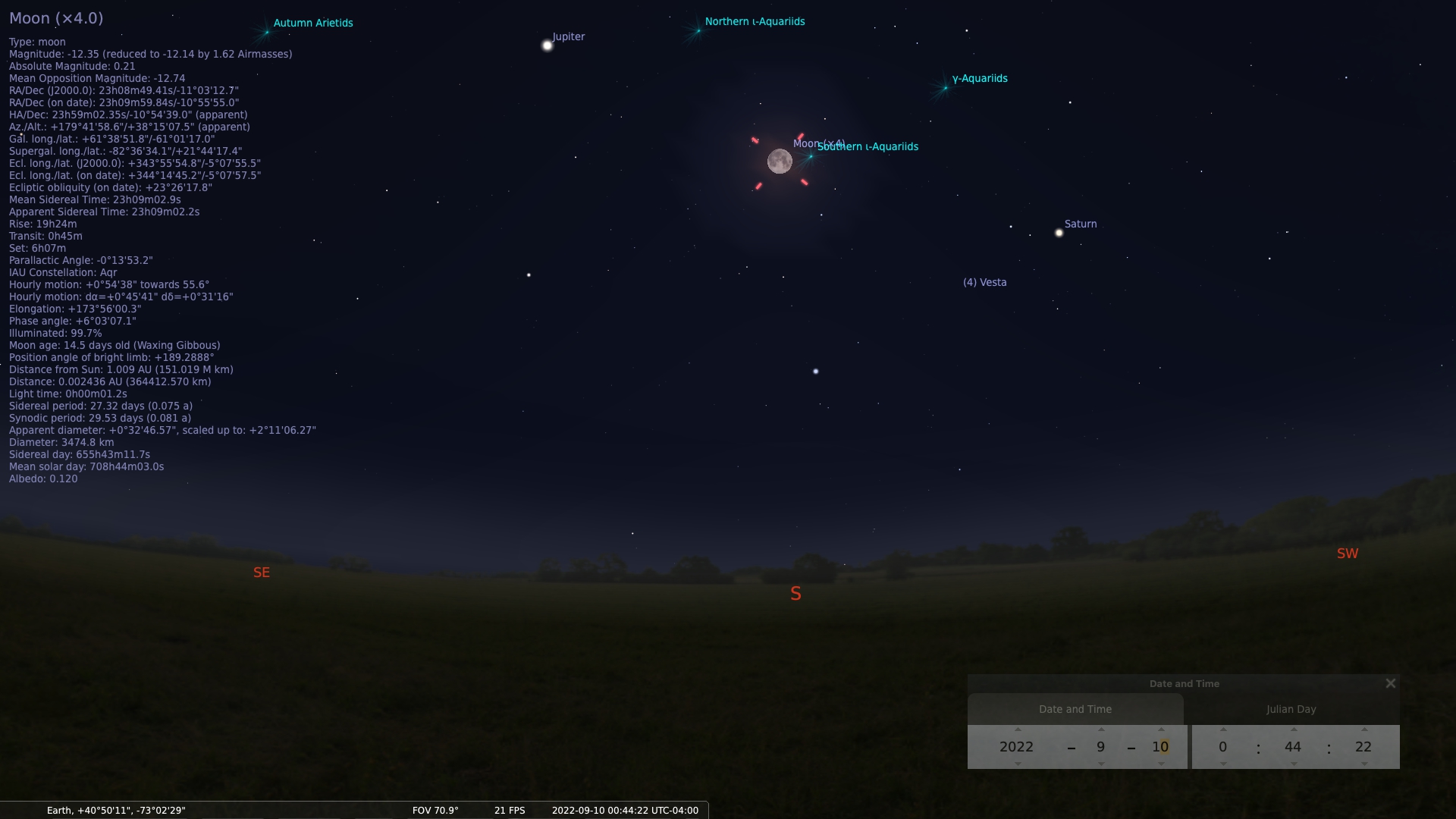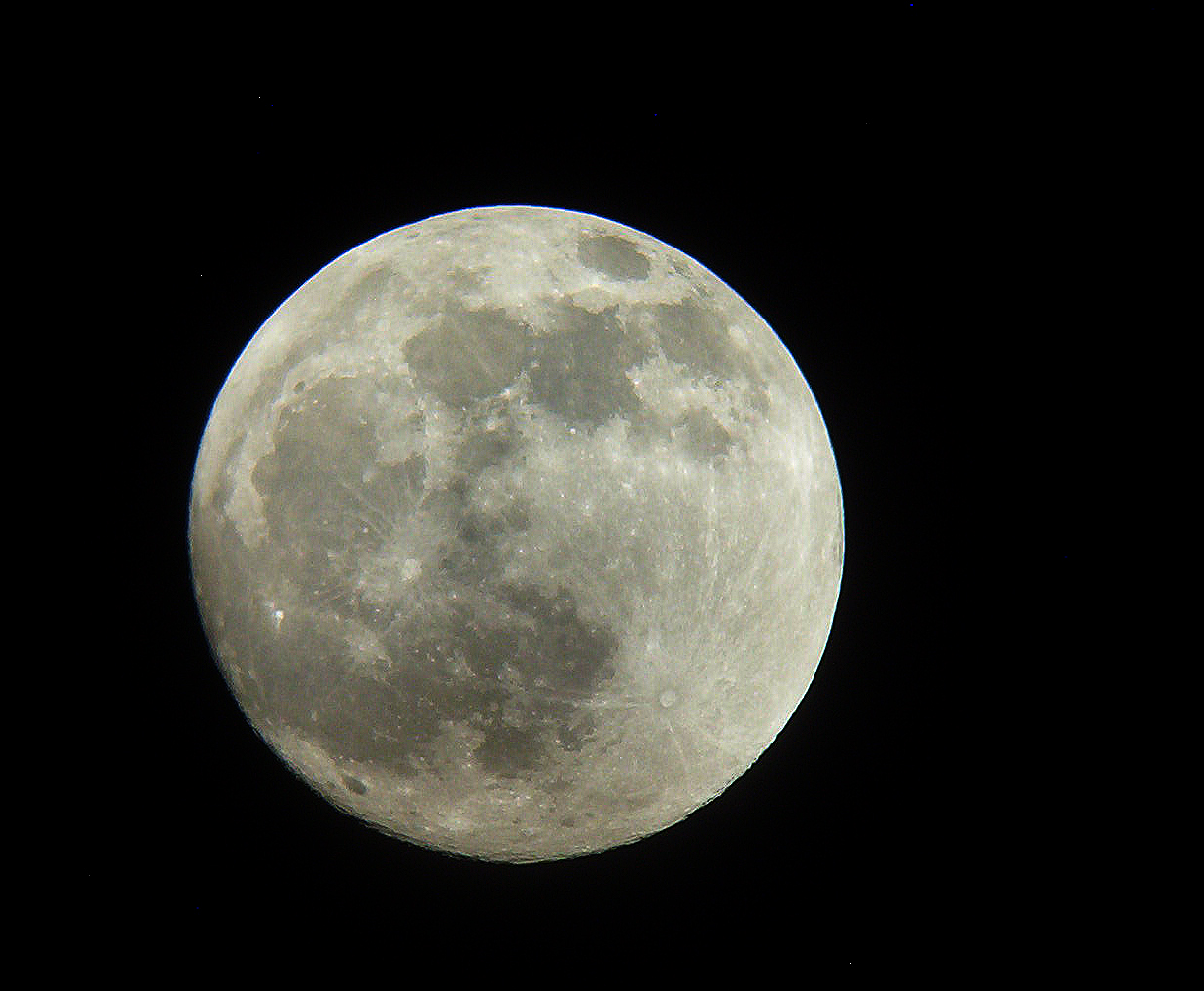
The Full Harvest Moon, 2022, well placed on the meridian at 12:44 AM, EDT. Flanking it to its east and west respectively, are Jupiter and Saturn.
I gazed at the full moon,
hanging low and bright oe’r the trees last night,
warm and inviting on that September night.
The Vernal and Autumnal Equinoxes are two days during the year with 12 equal hours of daylight and darkness. The Vernal Equinox heralds the beginning of Spring and the Autumnal Equinox, Autumn.
The Autumnal Equinox for this year occurs Friday, September 23, 2022, 1:03 UTC (Thursday, September 22, 2022 at 9:03 pm EDT). Many astronomical dates throughout the year can be found here.
What does the ‘Beginning of Spring’ or the ‘Beginning of Fall’ actually mean and what’s so special about these dates?
The changes we normally associate with the start of a new season are climactic such as changes in temperature or weather. So, what does the ‘Beginning of Spring’ or ‘Beginning of Autumn’ actually mean? To answer that we’ll have to consider the astronomical year in its totality and the other two significant dates during the year, the Summer and Winter solstices. Those events represent the points during the year when the sun is at its highest and lowest points on the sky respectively.
The sun at its highest point during the third week in June (June 20-22) in the northern hemisphere represents the ‘beginning of summer’. The sun is at its lowest point during the third week in December (December 20-22) in the northern hemisphere represents the ‘beginning of winter’. The two Equinoxes occur when the sun crosses the Celestial Equator at the midpoint between these highest and lowest points. The Celestial Equator represents the projection of the Earth’s equator on the sky.
It should be noted that the southern hemisphere experiences the same seasons but at opposite times during the year. Summer in Australia occurs during December and January while Winter occurs during June and July.
The Astronomical Beginning of Spring or Autumn are conventions, marking the first and second point respectively since the beginning of the year when the sun crosses the Celestial Equator.
The Vernal Equinox in March marks the first time there are 12 equal hours of daylight and darkness. Similarly, the Autumnal Equinox, occurring during the third week of September, marks the 2nd and final time during the year when there are equal hours of daylight and darkness.
What Happens During the Equinoxes?
12 equal hours of daylight and darkness.
The opposite seasons begins for our friends in the Southern Hemisphere.
The sun rises due east and sets due west at any point on the planet.
The sun’s elevation above the nearest horizon (southern horizon for Northern Hemisphere observers and northern horizon for Southern Hemisphere observers) is exactly equal to the compliment of their latitude; for example, if your latitude is +40 (40 degrees north latitude), the elevation of the sun would be 50 degrees above the southern horizon.
The Harvest Moon
The full moon nearest to the Autumnal Equinox is known as the “Harvest Moon”. This year, that occurred Saturday, September 10 at 9:59 AM (UTC), 5:59 AM (EDT).
Before the invention of the electric light, the light of the full moon gave aid to the farmers of old, extending the time during which they could harvest their crops. Rarely, the Harvest Moon occurs during October but when it does, the September full Moon is also known as the Full Corn Moon as it corresponds with the corn harvest. This moon is also known as the Barley Moon, corresponding to the barley harvest.
For moon fans, the month begins and ends with a New Moon. The Full Moon occurs precisely between each new moon on the 16th day. For additional details, a full lunar calendar and the lore behind each month’s Full Moon, please visit the Farmers Almanac.
Featured image: Full Harvest Moon, September 26, 2007:






